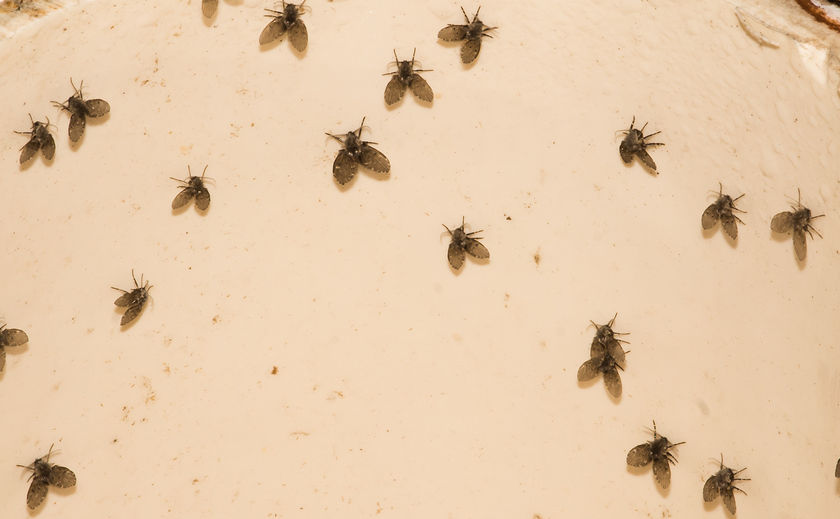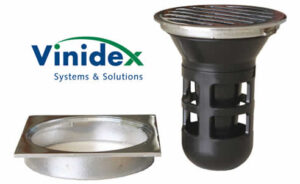
by Gary Mays | Oct 14, 2015 | Bathrooms, Blocked drain, City of Gold Coast, Consumer Issues, Gold Coast Plumbing, Health Issues, Plumbers, Plumbers Gold Coast, Plumbing Emergencies, Septic Tanks, Sustainable Plumbing, Toilets
We were happy and astounded that we received so much positive feedback about our September newsletter and blog on flushable wipes being an environmental disaster.
A few people felt the photos were a bit too graphic. But let me assure you there is no other way of illustrating what a flushable wipe looks like that is blocking up a drain or toilet.
 It was gratifying to see that a week after I wrote the newsletter about the disasters being caused by flushable wipes that Choice announced their 2015 “Shonky Awards” with Kleenex flushable wipes being one of the 8 “winners”.
It was gratifying to see that a week after I wrote the newsletter about the disasters being caused by flushable wipes that Choice announced their 2015 “Shonky Awards” with Kleenex flushable wipes being one of the 8 “winners”.
Like every other plumber worldwide we at Whywait Plumbing are continuing to see a horrendous increase in blocked drains due to the sky-rocketing popularity of these so-called “flushable” wet wipes.
Unfortunately, the term “flushable” is a catchy phrase and a favourite sales pitch presenting an image of convenience and hygiene with the wipes being flushed down the toilet.
But the reality remains that the flushable wipes, once they are flushed down a toilet pan, do not dissolve like toilet paper. They stay intact, and these pieces of non-woven fabric when regularly used are blocking toilets, blocking house drains and blocking the City of Gold Coast sewer system.
It is positive that Choice has continued with their action to stop the sale of ipes labelled “flushable” by producing a very informative and graphic video titled “Flushable wipes – Are they flushable?”
But the facts are that flushable is assumed to mean biodegradable by consumers who love their convenience. As a result, when wipes are flushed down the toilet, there is a misleading assumption that the wipe will be the same as toilet paper and dissolve.
In fact, Choice surveyed 1679 Australians in July and asked: “If a pack of disposable wet wipes is labelled as ‘flushable’, would you expect the wipes to not cause any blocking or clogging of the toilet?”
As we would expect 73% of those surveyed answered yes with 67% saying that they would expect flushable wet wipes to disintegrate “like toilet paper”.
Choice, as you can see in the video, put the flushable product claims to the test. They used an agitation device designed to provide an environment similar to your sewer drain system.
Choice put 12 brands of wet wipes made up of 11 which were labelled as “flushable” and one that was labelled “do not flush” into the agitator along with standard 4-ply toilet paper. The agitator then ran for six hours.
The brands Choice tested that were labelled as ‘flushable’:
- Sorbent Clean and Fresh Wipes
- Sorbent Flushable Wipes – Kids
- Kleenex Cottonelle Cleansing Cloths
- Kleenex Cottonelle Flushable Cleansing Cloths for Kids
- Confidence Adult Wipes
- Woolworths Select Flushable Toilet Wipes
- Coles Bathroom and Toilet Wipes
- White King Flushable Bathroom Wipes
- Vagisil Feminine Flushable Wipes
- Harpic White and Shine Flushable Toilet Wipes
- Naty by Nature Babycare Flushable Wipes
 As expected the toilet paper started to break up within 90 seconds, then disintegrated entirely as required. All that was left was milky opaque water.
As expected the toilet paper started to break up within 90 seconds, then disintegrated entirely as required. All that was left was milky opaque water.
But all the wipes remained completely intact with no sign of them breaking up or losing any strength.
Choice is now running a campaign asking you to be a flush buster and wipe misleading claims off supermarket shelves. Click on the link below to register your support.
Trust me the only things that are flushable in your toilet are toilet paper, urine and faeces.
I can only repeat if you wish to continue flushing wet wipes in all their forms down your toilet then I recommend you become a Whywait Plumbing Service Partner.

by Gary Mays | Jan 14, 2015 | Bathrooms, Blocked drain, blocked toilet, City of Gold Coast, Consumer Issues, Drain Odours, Emergency Plumber, Gold Coast Plumbing, gurgling drains, Health Issues, Insurance, Leaking Pipes, Plumbers, Plumbers Gold Coast, Plumbing Emergencies, Plumbing Maintenance, Plumbing Renovation, Septic Tanks, Toilets
Gurgling drains are a warning sign
Gurgling drains or gurgling toilets should never be ignored. A gurgling drain or gurgling toilet is giving you a friendly early warning sign that you are possibly about to experience blocked sewer drains.
Generally, the sounds of gurgling drains will be coming from your toilet or the bathroom floor waste drainage trap when you are using other plumbing fixtures. Simplistically, gurgling drains are similar to you experiencing an asthma attack because the drain is struggling to breathe.
Gurgling drains are trying to breath

Whywait Plumbing CCTV drain camera locating roots in a drain that were causing gurgling drains
When you experience gurgling drains or a gurgling toilet what has occurred in your underground sewer drains is that the drains are full of wastewater that is blocking or partially blocking the drains vent pipe that connects from your drain and extends up above your roof.
Therefore when you use any of your plumbing because the vent is not letting the drain breath, the drain creates a vacuum. The vacuum affects the trapping system in the toilet pan or floor waste trap or occasionally a laundry tub or overflow relief gully in an attempt to get air. Usually, only part of the water in the fixture trap is sucked out leaving the remainder of the water in the trap and it this water movement that causes the gurgling drains as air is sucked into the drain.
The interconnecting plumbing and sewer drainage system in your home is a straightforward system, but it must be able to breathe and get air into the system through your vent pipes. Many people believe that the vent pipe is a stink pipe to remove smelly sewer odours from the sewer drain. This is partially correct but the vent pipes other job is to equalise air pressures within your sewer drains and give you a balanced system that allows wastewater to flow.
Very simply whenever you flush the toilet or have a shower or turn your washing machine on the wastewater immediately runs into your sewer drains. Instantly in the drain, you get water and air displacement with a vacuum being created behind the flowing water that sucks air into the drain to equalise the pressure in your drain and allows the water to flow.
Gurgling drains should never ever be ignored as they seldom go away and should be investigated immediately by calling Whywait Plumbing now on (07) 5580 4311.

by Gary Mays | Mar 24, 2013 | Bathrooms, Blocked drain, Consumer Issues, drain fly, Drain Odours, Gold Coast Plumbing, Health Issues, Plumbing Maintenance
Recently here at Whywait Plumbing, we have had several calls from clients who are concerned they are about to be overrun by small drain flies in their bathroom. Generally, the concern is that they are in large numbers, and no matter what is done to kill them, every drain fly seems to multiply as there is always more the next day.
Cleaning Your Drains Doesn’t Get Rid Of A Drain Fly
Many clients had cleaned the bathroom until it could be cleaned no more. So by process of elimination, they had decided that they were coming out of one of the drains in the bathroom. Frustratingly no matter how often some clients sat and observed the drains, they never saw any of the drain flies emerging from the drain in the shower or basin or the floor waste. Many clients describe them as lazy flies, accumulating on the bathroom walls and seldom flying.
Most people observed that the flying drain flies were mainly sitting on the walls or ceiling in the bathroom. We can confirm that everyone was experiencing what is commonly known as drain flies or bathroom flies emerging from the floor waste drain where they breed.
What Do Drain Flies Look Like

A typical-looking drain fly on a bathroom wall
Drain flies are dark grey and 2mm – 4mm long with hairy moth-like wings. They have a jerky flight as they are weak fliers and usually are found close to the floor waste drain or other areas of origin, such as the shower or bath waste. This is why they seldom stray outside the bathroom. In most cases, they are breeding in the bathroom floor waste trap.
Drain flies do not bite and are not known to transmit diseases of any sort. They do not damage clothes or linen and are considered to be more of an unsightly nuisance value in your home.
The adult drain flies and larvae can be controlled by eliminating or reducing breeding sites. If the infestation is minor, pouring bleach into the floor trap will usually kill them. However, if that does not solve the problem, then you will need to kill them by thoroughly cleaning the drain lines and or sealing the floor trap.
They continually seem to be in large numbers despite always killing them because eggs hatch in 32 to 48 hours when the temperature is above 20 degrees. The larvae mature in 9 to12 days and feed on the decaying organic matter that accumulates in the floor waste trap. The life cycle of drain flies is 1-3 weeks. Adults drain flies live about two weeks, with old ones dying and new ones emerging. They feed on the wastewater in the floor waste trap. During the day, the adults rest in shaded areas under the basin or on walls near plumbing fixtures and showers and baths. Most activity occurs during the evening when the flies are seen hovering about.
Septic Tanks Breeders
If you are on acreage and have septic tanks or treatment plants, they may breed in large numbers in and around the tanks. Drain flies may be carried by prevailing wind to nearby homes up to 3 kilometres away. Adult drain flies are small enough to pass through ordinary window insect mesh screens.
Thorough Cleaning of Drains and Traps
It is the experience of Whywait Plumbing that cleaning the drains from the basin, shower and bath that discharge into the floor trap is only part of the answer. It is also beneficial to clean the floor waste trap and grate thoroughly. We recommend cleaning the whole area with No–Rinse Floor Cleaner, Sanitiser & Disinfectant, which will clean and disinfect the floor and drain. We don’t recommend the need to continually pour chemicals such as bleach down the drain as it is washed away as soon as you use any water in the basin or shower fixtures.
 Drain PRO™ – The Drain Fly Solution
Drain PRO™ – The Drain Fly Solution
In 2010 Gary and Michele Mays, the owners of Whywait Plumbing Services, went through this entire experience of drain flies invading their ensuite bathroom. Gary Mays installed a Drain PRO™ unit into the floor waste, which prevents not only drain flies but also bacteria, odours and insects from exiting through the drain into the bathroom.
It is three years since the installation of the Drain PRO™ units in all of the bathroom floor traps in their home, and they have eliminated the reoccurrence of the annoying tiny lazy drain flies.
If you are experiencing the annoyance of drain flies that will not go away, call Whywait Plumbing at (07) 5580 4311 to book a service call so we can eliminate them once and for all.


by Gary Mays | Jul 8, 2011 | Blocked drain, blocked toilet, blocked toilet drain, City of Gold Coast, DIY Plumbing, Drain Odours, Gold Coast plumbers, handyman, Health Issues, Plumbing Emergencies, Toilets
Toilet paper is blocking your drains, and we know it for a fact at Whywait Plumbing. Blocked drain incidences have been increasing every year since 2005.
Whywait Plumbing has noted the upward trend of annual increases in the number of blocked drain occurrences that require clearing with high-pressure water jetting equipment since 2005, with even sharper increases since 2008.
This has generally been attributed to the advent of low-flow dual flush toilets, especially the 4.5/3 litre toilet suites.
Your house drain that connects to the sewer was designed when water flows were much more substantial than they are now. Traditionally a toilet flush was 11 litres, and this flow was supplemented by inflows from the bathroom, kitchen and laundry. Prior to legislative changes in 2007, a shower deluged you with a flow of 25 litres per minute now that is 9 litres. Taps in the remainder of the house all had substantial flow rates of 20 – 25 litres per minute, but now that is 6 litres per minute.
Consequently, it made sense that the 70% reduction in water flows was the cause of this rapid increase in blocked drains. Naturally, this made complete sense in homes and business premises that were new or had upgraded their taps and toilets. But why were we seeing an increase where no such upgrades had occurred? Over the last year, Whywait Plumbing Services, like many other plumbing companies, began noticing, when undertaking a CCTV survey of a drain, large clumps of toilet paper that had not broken down in the water.
This issue with toilet paper has now reached a point where the National Plumbing Regulators have had a NATA laboratory undertaking research on the varying degrees of toilet paper quality and its influence on flow performance down a drain. Results to date are concerning as over 20 commercially available toilet paper brands were evaluated in full performance testing. There were an excessive number of these toilet papers whose performance in the poor break down in water can potentially cause more blockages than others.
It’s interesting to note that none of the toilet paper culprits that have an increased potential to cause blockages is locally manufactured. Its even more interesting that the Federal Government has a committee investigating the dumping of commodities by China into Australia and one of these commodities is toilet paper. It is doubtful whether Coles and Woolworths are too concerned about what happens to this cheap toilet they import once it passes through their checkouts. Who knows what these toilet papers are really manufactured from?
These cheap toilet papers dominate in commercial buildings where contract cleaning companies install the cheapest toilet paper they can purchase. This has resulted in alarming increases in blockages in commercial buildings.
So next time when you pick up that packet of toilet paper that is on special in the supermarket just have a look to see where it is manufactured or you may unknowingly be purchasing a blocked drain at the same time.

 It was gratifying to see that a week after I wrote the newsletter about the disasters being caused by flushable wipes that Choice announced their 2015 “Shonky Awards” with Kleenex flushable wipes being one of the 8 “winners”.
It was gratifying to see that a week after I wrote the newsletter about the disasters being caused by flushable wipes that Choice announced their 2015 “Shonky Awards” with Kleenex flushable wipes being one of the 8 “winners”. As expected the toilet paper started to break up within 90 seconds, then disintegrated entirely as required. All that was left was milky opaque water.
As expected the toilet paper started to break up within 90 seconds, then disintegrated entirely as required. All that was left was milky opaque water.





 Drain PRO™ – The Drain Fly Solution
Drain PRO™ – The Drain Fly Solution


